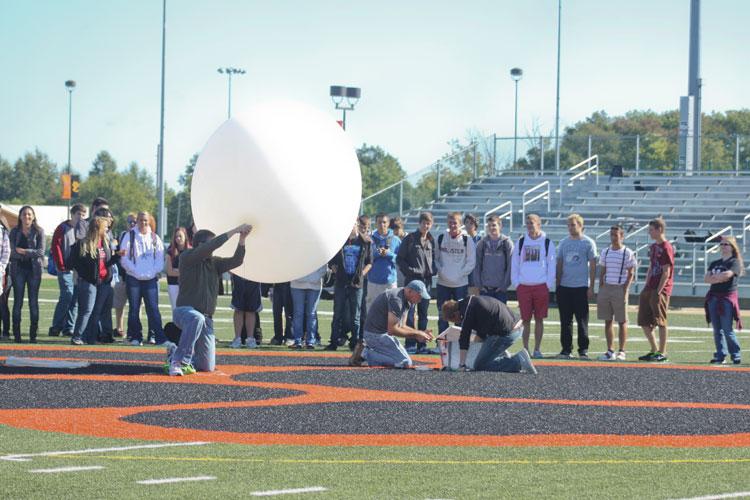
Earth and Space classes invited AP Human Geography students to participate in a weather balloon launch Tuesday, Sept. 18 on the football, soccer and band field.
The balloon was sent up with a gondola carrying three GPS devices, a camera set to take a photo every 10 seconds during a flight, a barometer, a thermometer, and a UVA/UVB probe to measure levels in the atmosphere.
According to Zach Santiago, the Earth and Space classes “hope to reach the ozone layer before the balloon pops.” The balloon is expected to reach a diameter of 20 feet before bursting from pressure differences in the atmosphere.
Earth and Space students will use the instruments in the balloon to study the atmosphere, and Human Geography students will be using the GPS locations transmitted from the balloon gondola in their own research.
After the balloon launch, teachers Adam Tyler and Kevin Paur will follow the balloon from the ground to collect the gondola when it falls. GPS locations transmitted from the balloon will be sent to a website that can be checked from their phones, and in the absence of cell service, they will track it through a computer.
Though the balloon was expected to launch straight upward when released, it headed directly south. “At first, I thought it was going to drag right across [the turf],” Mr. Tyler said.
After the launch, Mr. Paur said,” For a second there, I thought, ‘Is that even going to get off the ground,'” but there was no cause for worry.
Approximately two minutes after launch, the balloon continued heading south at 20 m.p.h., and had reached an altitude of 1,400 feet.

